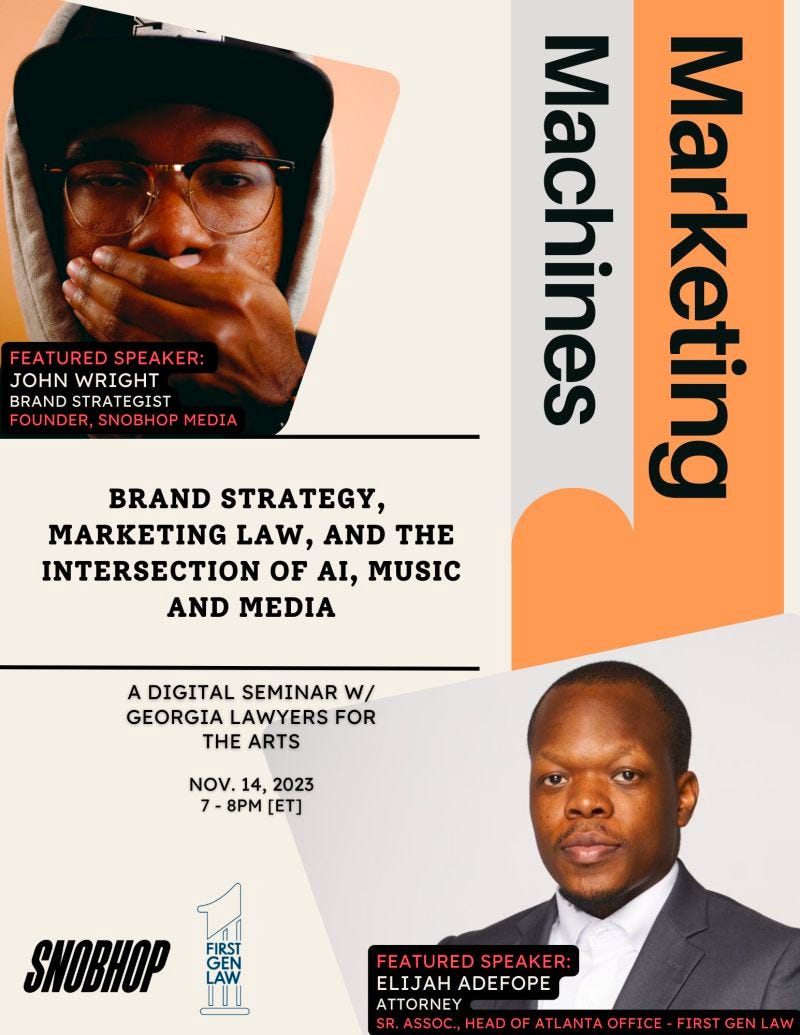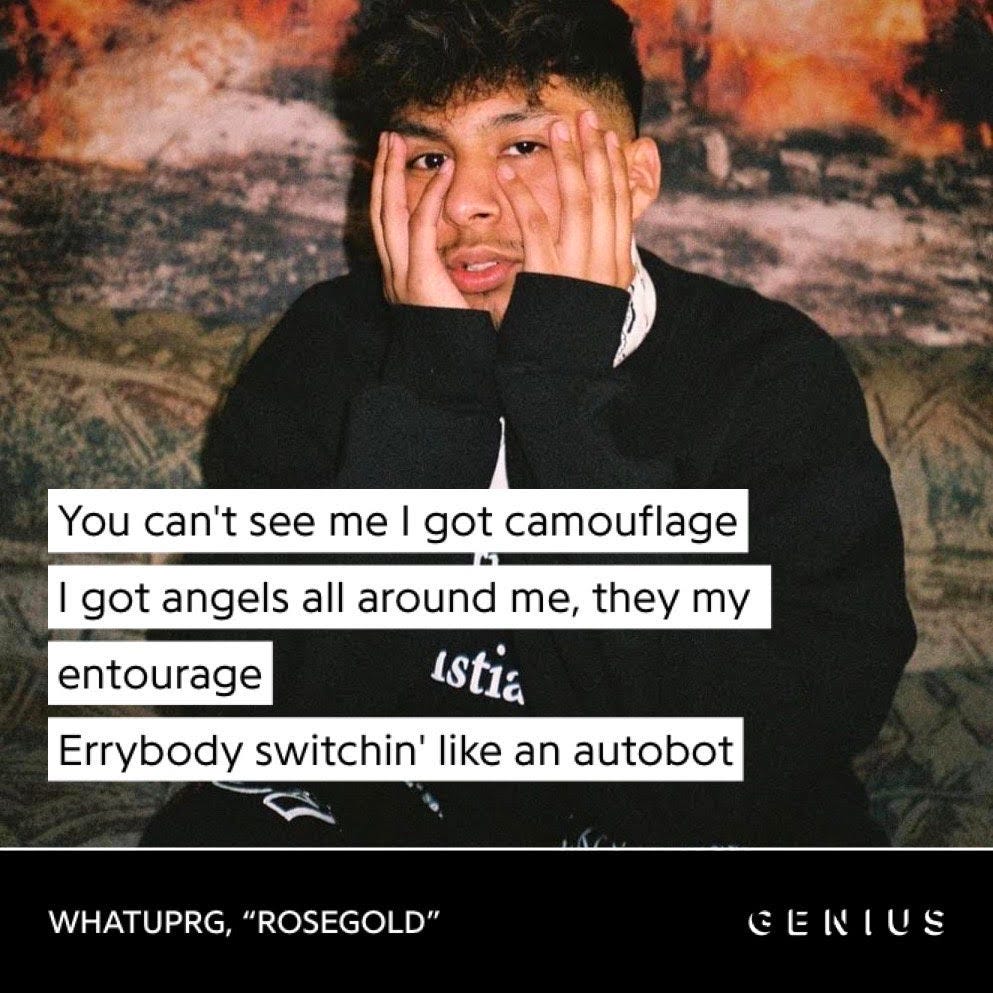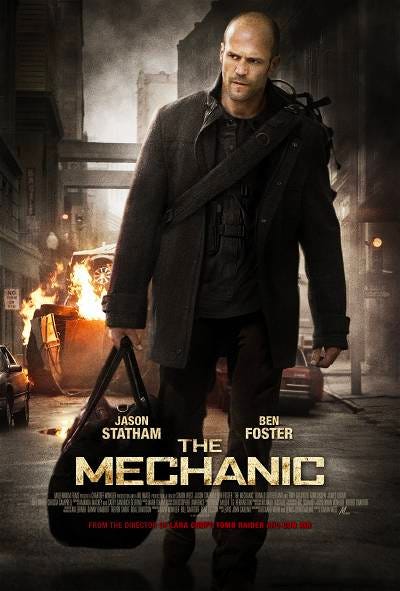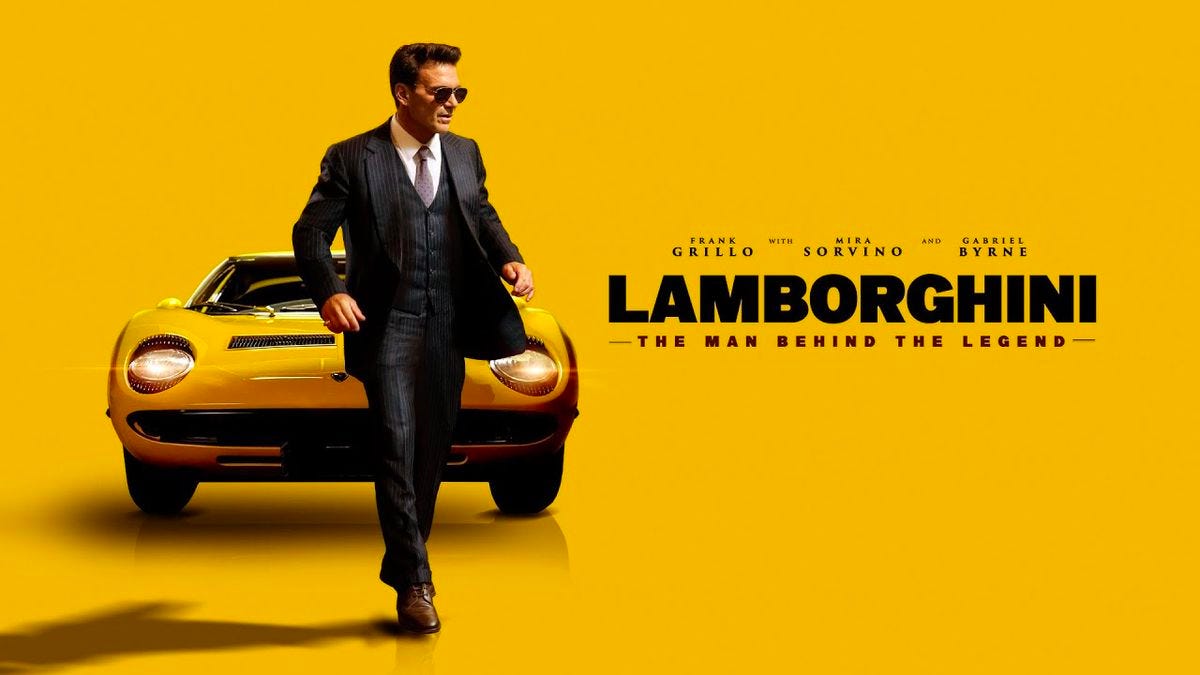This article is about a digital seminar I’m hosting this Tuesday. It’s a bit lengthy since it will also serve as a companion for those who join the seminar. Skip down a few paragraphs if you want to get straight to the seminar access information.
Let’s get into it.
Over the course of my career, I’ve learned something interesting about the frequent perception of lawyers and the practice of law. This may come as a shocker to you, but many people don’t like nor trust lawyers. Many think we’re parasites or “cost-centers”.. effectively, paper weights (🙂) who extract more value than we add.
There’s some truth to this.
And when it comes to corporate lawyers, not all are business-oriented, and many are like those with proverbial hammers in their hands, who turn every problem into nails.
Personally, I never looked at the practice of law that way. I never wanted to be a lawyer for starters.. but the way I look at myself is like a mechanic.
I look at things holistically, and view myself as someone whose goal is to make sure the “car” runs as smoothly as possible. Sure, your tires may have some tread on them now; but is that the priority? Or maybe you need to take care of your transmission, first. Or maybe, you just need a paint job right now.
I mean a real paint job, not a hit..
…anyway, that line of thinking led me to create a seminar.
This Tuesday, at 7pm to 8pm (ET), I’ll be hosting a digital seminar with Georgia Lawyers for the Arts and John Wright. John is a brand strategist at Majority, an advertising agency in Atlanta, Georgia. He also writes a Substack dedicated to Hip-hop, Marketing, & Black Culture. Some of his articles include: How Brands Grow: As Told By Drake and The Global Expansion of Africa’s Music Scene & Its Presence in Advertising.
The seminar will touch on brand strategy, marketing law, and the intersection of music, media, and AI. It will be roughly an hour long; and we will try to cover as much as we can. We’ll also be emailing the deck to everyone who attends.
The seminar is free and will be held on Zoom. You can register here, or simply log in on Tuesday(at 7pm ET) using this information:
https://us02web.zoom.us/j/84595772978?pwd=ZVFsWGxoNzVGMmJZWUw1SHkzUzRFUT09
Meeting ID: 845 9577 2978
Passcode: 552763
In the meantime, here’s a breakdown of what will be discussed in the seminar on Tuesday (at 7pm ET).
MARKETING MACHINES: A SEMINAR OVERVIEW

The purpose of this seminar is to provide a holistic view of the branding / marketing activities of companies, particularly in media.
We will first deal with branding strategy, marketing law, and then we’ll touch on AI considerations as it relates to the intersection of AI, Music, and Media. Artificial Intelligence, of course, being a topic that is expansive and can be covered from many different angles, and by people in many different domains; but, for the purposes of this article and this seminar, we’ll mainly cover the most currently relevant areas of AI and the law - as it relates to music and media.
For more in-depth coverage of the intersection of AI, law and media, here are some books you can look into:
Media Management and Artificial Intelligence: Understanding Media Business Models in the Digital Age
Law and Artificial Intelligence: Regulating AI and Applying AI in Legal Practice
MARKETING MACHINES: BRAND STRATEGY
As I mentioned, in my mind, I see businesses as machines; specifically like Transformers. Businesses are machines that transport (people, goods, and services); but also have the ability to be forces for good (or evil) in society.
When it comes to establishing commercial enterprises, an important area to consider is branding and positioning. I won’t spend much time here as this is John’s area of expertise and will be covered by him; I also touched on it in this article:
In essence, your brand is the way people and customers perceive you and/or your business. It is the ideas, quality, themes and origination they associate with a product, service, or entrepreneur. Positioning is where you fit in the market. Two corporate lawyers can have two different positions; that is, they meet two different needs, focus on two different sets of customers; and, as a result, have two different brands.
As a non-traditional law student, who first got a Masters in Public Administration and then went to a small law school, this is something I’ve had to figure out by trial and error.
Here’s an example of brand positioning.
Lambo Rambo
Ferruccio Lamborghini was an Italian soldier, mechanic, and engineer who became an automobile designer. As the story goes, he was born to grape farmers; but had more interest in working with machines than on the farm. Along his journey, he founded Lamborghini Trattori, as a manufacturer of farm equipment and tractors. As his business succeeded, it afforded him the ability to purchase high end cars; but he was dissatisfied with some of the cars he bought.
Ferruccio “believed that a grand tourer should have attributes that were lacking in Ferrari's offerings, namely high performance without compromising tractability, ride quality, and interior appointments. A clever businessman, Lamborghini also knew that he could make triple the profit if the components used in his tractors were installed in a high-performance exotic car instead.”
In other words, he wanted to build a luxury, high-speed, high-performance vehicle that could be handled well, provided a great driving experience, and looked good.
“You buy a Ferrari when you want to be somebody, you buy a Lamborghini when you are somebody”
- Frank Sinatra
Positioning.
Ferruccio Lamborghini identified an open space in his target market, and positioned his company to fill that void. Whether or not, the positioning is 100% accurate, I don’t know. I’ve driven a Ferrari, but not a Lamborghini so I couldn’t tell you; but that’s not the point. The point is that whether, in perception, or reality, Ferruccio Lamborghini intentionally positioned his company; and the actualization and communication of that positioning to the market contributed to Lamborghini becoming the brand it is today.
That’s the point of this section of our seminar, it’s not enough to start a business or enter into a specific field. It’s important to understand and be intentional about the need you’re meeting, the space you’re occupying, and how you are able to uniquely position yourself and consistently communicate to the marketplace that position.
John talked more about this in this article: Ogilvy on Advertising… As Told by Wu-Tang Clan
MARKETING MACHINES: MARKETING LAW
When people say marketing or advertising law, it’s a bit of a misnomer. It’s like saying sports or entertainment law. There isn’t really one specific set of laws that cover these practice areas as a whole; but more so different laws, regulations, and regulatory bodies which govern different aspects of each practice area.
For example, when it comes to “sports law”, professional athletes, agents, lawyers and professional teams deal with labor law through player associations and collective bargaining agreements; contract law through team contracts, representation agreements, endorsements, and other commercial agreements; real estate law through the arenas and stadiums that teams purchase and lease; and insurance law through the insurance coverages teams and players may take out on players - so on and so forth.
The same applies to marketing and advertising.
That said, there are a few important laws, rules, and regulations for businesses to understand as it relates to marketing and advertising law.
Intellectual Property Laws
Effective marketing and advertising include understanding intellectual property laws. As stated by the World Intellectual Property Organization, “intellectual property (IP) refers to creations of the mind, such as inventions; literary and artistic works; designs; and symbols, names and images used in commerce”.
Sub-categories of IP are:
Patents
Copyrights
Trademarks
Industrial Designs
Geographical Indications; and
Trade Secrets
For the purposes of this article, we will focus on copyrights and trademarks.
Trademarks
According to the United States Patent and Trademark Office (USPTO), a “trademark can be any word, phrase, symbol, design, or a combination of these things that identifies your goods or services. It’s how customers recognize you in the marketplace and distinguish you from your competitors.”
That’s why trademarks are included in marketing and advertising law. You spread the word of your brand through marketing and advertising, often using trademarks in those advertisements. By understanding trademark law, and securing your marks (whether that be product/service names or logo), or refraining from infringing on those of others, you can ensure effective branding and positioning.
To this point, there are key points to know about Trademark. As per the USPTO,
“You become a trademark owner as soon as you start using your trademark with your goods or services. You establish rights in your trademark by using it, but those rights are limited, and they only apply to the geographic area in which you’re providing your goods or services. If you want stronger, nationwide rights, you’ll need to apply to register your trademark with us”
In essence, registering your trademark with the USPTO creates a legal presumption that you own the mark and have the right to use it nationwide for the specific class(es) (e.g. good and services); which creates a higher hurdle for claimants to contest the validity of your mark.
To use our friend Ferruccio as an example, and as you can see, Lamborgini has registered a trademark for motor vehicles. This means that no one else may use Lamborghini for their line of automobiles; though you may be able to use the name Lamborghini for other purposes. I would hire a good lawyer though.
Copyrights
As stated by the U.S. Copyright Office, a “copyright is a type of intellectual property that protects original works of authorship as soon as an author fixes the work in a tangible form of expression. This includes different types of works such as paintings, photographs, illustrations, musical compositions, sound recordings, computer programs, books, poems, blog posts, movies, architectural works, plays”.
Additionally, under copyright law, copyright owners generally have six rights - which I covered in this article.
Here are some ways copyright law shows up in the market:
Synchronization Licenses - agreements between the owner of a musical work and the right holder of an audiovisual property. This typically happens when a television network, production company, or movie studio wants to include a pre-recorded song, whether the sound recording or the musical composition, in a commercial, TV show, or movie. Because songs are copyrightable, these parties must get the permission of the songs right holder(s) before including the song in their property.
Copyright Assignment Agreements - contracts where one party transfers ownership of a work they’ve created in part or in full. It’s important, when involved in a business arrangement that involves the creation of new IP, that you closely review (or negotiate) any IP terms. An example of this could be a photoshoot. Unless the photoshoot is with a large media publisher, it may be advisable to have the photographer sign a copyright assignment agreement, assigning all ownership in the pictures to you. Without this, the photographer has a strong argument that they own the picture.
(Don’t forget to register your copyrights as a prerequisite to a copyright infringement suit)
Right of Publicity
The right of publicity is an intellectual property right that prevents an individual’s name, image, or likeness from being used without their permission and, particularly, for commercial gain.
In the United States, there is no federal right of publicity; but rather about 35 states recognize this right either by statute, common law, or some combination of both. For that reason, right of publicity laws may vary depending on the state in which an individual is domiciled.
We’ll dive a bit deeper into the right of publicity during the seminar; but, for the purposes of this article, it’s important to know that the right of publicity is distinct from copyright and trademarks; though a name can be registered as a trademark (e.g. Rihanna, Michael Jackson, Taylor Swift)
COMMUNICATION LAWS (ADVERTISING)
THE FTC ACT
While there are other laws that touch communication and advertising, the FTC Act is one of the most significant.
The FTC is an independent agency which, among other things, “enforces federal consumer protection laws that prevent fraud, deception and unfair business practices.” The FTC, under Section 5 of the Federal Trade Commission Act (FTC Act) (15 USC 45) states, mandates that “claims in advertisements must be truthful, cannot be deceptive or unfair, and must be evidence-based.”
This rule applies to general advertisements, claims made by businesses in commerce (including their terms and conditions); in addition to social media influencers and sponsored ads.
We’ll dive a bit deeper into this during the seminar, as well, but an example of an FTC enforcement action is the 2020 settlement between the FTC and ‘Teami Tea’, who the FTC claimed “promoted its products using deceptive health claims and endorsements by well-known social media influencers who did not adequately disclose that they were being paid to promote its product.”
Internet Platform and Data Privacy Laws
We’ll run through this section because I don’t want to bore you; but the key thing to know is that there are a variety of laws which govern the publication of content on internet platforms; in addition to the collection of user data by these platforms (or any business in general). These laws include Section 230 and the Digital Millennium Copyright Act (which I wrote about here), the General Data Protection Regulation, the California Consumer Privacy Act and California Privacy Rights Act; and others. All of these laws create rights and obligations on the part of internet platforms, and companies, and those who use them.
Data privacy laws vary in their requirements, but they typically require some form of obligation for those who collect (or process) data to obtain data in a lawful manner; whether through consent, contract, or some other means. These data privacy laws also provide rules on how companies should responsibly handle the data they collect.
To tie this all into AI, Forbes quotes Dr. George Dagliyan of Pepperdine’s Graziadio Business School, that there are “both facilitators and inhibitors of AI adoption”. The facilitators are: (i) convenience, (ii) customization, and (iii) efficiency; while the inhibitors are (i) uncertainty, (ii) privacy risk, and (iii) loss of control risk.
As you can see, at least according to Dr. Dagliyan, the sensitivity of data when used with AI, and data in general, will be an area for businesses to keep a close eye on.
MARKETING MACHINES: MUSIC, MEDIA & AI
As I mentioned earlier, artificial intelligence is an expansive area. Like anything, this field has many different areas and there are people much more qualified than me to speak on the intricate workings of AI systems; but, for the purposes of this article, I’ll focus on a few relevant areas:
What is AI?
There are many different definitions of artificial intelligence, but if we look at 15 U.S.C. 9401(3) of Title 15, which outlines commerce and trade in the U.S., artificial intelligence means the following:
“a machine-based system that can, for a given set of human-defined objectives, make predictions, recommendations or decisions influencing real or virtual environments. Artificial intelligence systems use machine and human-based inputs to-
perceive real and virtual environments;
abstract such perceptions into models through analysis in an automated manner; and
use model inference to formulate options for information or action”
Google states that “artificial intelligence is a broad field, which refers to the use of technologies to build machines and computers that have the ability to mimic cognitive functions associated with human intelligence, such as being able to see, understand, and respond to spoken or written language, analyze data, make recommendations, and more.”
In addition, they refer to machine learning (or ML), a term often used interchangeably with AI, as “a subset of artificial intelligence that automatically enables a machine or system to learn and improve from experience. Instead of explicit programming, machine learning uses algorithms to analyze large amounts of data, learn from the insights, and then make informed decisions”
AI as a Creative Tool
Jeffrey Katzenberg, former chairman of Walt Disney Studios and co-founder and CEO of DreamWorks Animation recently said that AI could lower the cost of creating animated movies by 90%.
"In the good old days it took 500 artists five years to make a world class animated movie, I don't think it will take 10% of that three years out from now”
It’s important to note that he views AI as a tool, similar to a paintbrush of photoshop, rather than a complete replacement for humans; although, it is likely that as with all technology, it will reduce the need for as many workers in applicable roles.
That’s the way that I generally view AI technology.
As it relates to music and media, I believe AI is a valuable tool because, among other things, it allows media companies to provide value through greater efficiencies. Basically, it lets companies do more for, and with, less. It also enables companies to gain greater data insights; potentially, meeting the needs of their consumers in faster and more accurate ways.
As an example, in the form of recommendations to multimedia or e-commerce consumers. It allows media companies to know what to produce more of and what to produce less of. This is also key for individual artists, creators, and influencers, of all types, particularly those who may not view their businesses through an analytical framework.
For instance, many creators (and entrepreneurs in general) produce what they like rather than what their target market likes.
This doesn’t mean that one has to be subject to the whims and wishes of their audience; but, rather, gaining audience insights can allow you to craft a message which fits within the wrapper your audience finds most appealing.
By understanding and applying the capabilities of AI, and data science in general, we can all leverage our abilities and talents; ensuring we aren’t left behind.
In the same way that Lamborghini put powerful, tractor parts in sleek cars so that they were more powerful; yet could drive just as fast as other high-performance luxury vehicles, AI generally has the potential to enable businesses to do more with less.
Here are some examples of how businesses and creatives are including AI technologies in their work. I’ll keep this specific to music and media; but you can read this article, which I wrote last year, for another one of my AI takes.
Spotify utilizes algorithms and machine learning tools to analyze “users' listening habits and preferences to provide personalized recommendations and playlists”;
Universal Music Group (UMG) announced “a partnership with Endel, a company that uses AI to generate soundscapes meant to facilitate work, meditation, and sleep”;
Netflix utilizes AI and ML to (1) recommend shows to viewers, based on similar content they’ve viewed; and (2) to understand what new original content to produce, again based on viewer habits;
Kendrick Lamar utilized deepfake technology in his ‘The Heart Pt. 5’ music video. “The term ‘deepfake’ refers to an AI-based technique that synthesizes media and includes superimposing human features on another person’s body - and/or manipulating sounds — to generate a realistic human experience.”
The D.O.C. says he’s making new music with AI;
Shazam turned 20 years old in 2022, and since then the iPhone shazams and identifies at least 1 billion songs per month (using AI and ML);
Scriptbook utilizes AI “to predict the commercial success of a screenplay; he tool analyzes the script’s characters, themes, and plot points and then compares this data to the performance of similar films in the past to predict box office success”; and
Eventbrite has implemented AI tools in their service which “automatically generate event descriptions, summaries, and event images, AI-powered ad copy, and email messaging”.
The pattern that we can see here is that AI, ML, and similar technologies, are tools that create efficiency and gain deeper insights for media companies. Again, there’s a lot of scholarship on the topic of artificial intelligence and its capabilities; but the way I like to think about the current state of AI is as a super calculator. It allows businesses to speed up previously menial tasks.
Or if we go back to the Title 15 definition, AI helps “make predictions, recommendations or decisions”. It ingests, trains on, or calculates large amounts of data and provides recommendations, suggestions, or answers based on the data which has been inputed. It also has the ability to replicate images, sounds, and voices; which are, in essence, different forms of data.
An example of this, which doesn’t have to do with media, is a former job of mine at a pharmaceutical company. I was a contract specialist (see: paralegal). A significant part of my job was to manually enter contract values into an Excel spreadsheet. The company had hundreds of contracts in its files and didn’t know which contracts were currently open, the contract values, parties, dates; etc. So they needed someone to read through all of the contracts and create a database so they could understand who they had contracted with, which contracts were still valid, the contract amount; etc. That was pretty much my whole job; but now there are contract management systems that can virtually automate what I, and others, were hired to do - for much less. There are systems that can read through contract for you and pull out important points.
This is the potential of AI. AI powered contract management systems won’t completely replace humans (I don’t think). You’ll still need someone to direct and oversee the system; but companies, like my former employer, will need less “contract specialists” in the future.
AI and Copyright Law
Some of the most pertinent issues around copyright law and AI are around issues of ownership and authorship. Who is the copyright owner of AI output? and what are the obligations of AI companies who train their AI systems on work that is owned by other individuals and companies? That is, can AI companies use, otherwise copyrighted works to train their AI models?
This continues to be an ongoing question and, depending on the jurisdiction, there are different answers.
When it comes to the question of copyright authorship and AI, the U.S. Copyright Office has provided some guidance saying, in part, that in order for an AI-work to be registered, it must have sufficient human authorship. In essence, the Copyright Office looks at whether there was any human creativity involved in the creation of the work, past mere prompts, or whether the final work was wholly created by the AI system.
For example, in February 2023, “the Office concluded that a graphic novel comprised of human-authored text combined with images generated by the AI service Midjourney constituted a copyrightable work, but that the individual images themselves (which were created by AI) could not be protected by copyright.”
In coming to this conclusion, the Office has leaned on long-standing precedence which has held that “to qualify as a work of ‘authorship’ a work must be created by a human being” and that it “will not register works produced by a machine or mere mechanical process that operates randomly or automatically without any creative input or intervention from a human author.”
Along those lines we’ve seen industries position themselves for this reality. The Writers Guild of America (WGA) recently came to an agreement with the Alliance of Motion Picture and Television Producers, which included provisions governing the use of AI in Hollywood.
Most relevantly, the contract “establishes regulations for the use of artificial intelligence (“AI”) in the following ways:
The Company must disclose to the writer if any materials given to the writer have been generated by AI or incorporate AI-generated material.
A writer can choose to use AI when performing writing services, if the company consents and provided that the writer follows applicable company policies, but the company can’t require the writer to use AI software (e.g., ChatGPT) when performing writing services.
On the use of MBA-covered material for training purposes, the WGA reserved the right to assert that such use is prohibited by the MBA or by other laws”
These points are important to note because they touch on the points previously mentioned; which are the authorship and ownership concerns around generating AI creation and training. Here are some cases in point:
Universal Music sues AI company, Anthropic, for distributing song lyrics.
I wrote more about this in this article.
Judge Dismisses Several Copyright Allegations Against AI Companies in Artist Class Action.
I wrote more about this in this article.
Scarlett Johansson takes legal action against an AI app that used her name and likeness in an online advertisement without permission.
AI and the Right of Publicity
AI also touches the right of publicity.
Earlier this year, a ghostwriter created a song entitled ‘Heart on My Sleeve’, using AI-generated vocals of Drake and The Weeknd.
The song quickly went viral, and created hype and concerns around the web. It was largely taken down by UMG under copyright grounds. The DSP’s obliged; mostly under pressure I think and as we’ve seen, copyright law in this area is murky - and most agree that you cannot copyright a voice.
Even though there could be potential claims, or arguments, regarding the use of UMG controlled songs to train the AI - artists like Drake and The Weeknd have a recourse under the right of publicity, dependent on domicile of the right holder, to bar others from using their name, image, and likeness to commercialize a song; even an AI song.
And in other right of publicity-related AI news, states like New York, Texas, and California have passed right of publicity laws intended to frustrate the use of AI to infringe upon individuals’ right of publicity.
Additionally, four Senators have introduced the ‘No Fakes Act’, a bill that would “prevent the use of artificial intelligence to steal appearances or voices of singers, actors and other artists for profit”.
“She taking the Lambo for a drive, it’s an Aventador”
- The Weeknd (AI version), ‘Heart on My Sleeve’
Shoutout Ferruccio.
CONCLUSION
In conclusion, businesses are holistic. In creating a commercial enterprise, one should be aware that there is a level of intentionality required in establishing your brand, positioning yourself and your company, and communicating to the marketplace who you are, what you stand for, and what need you are serving - your brand promise.
In the communication of a brand promise, entrepreneurs and businesses market and advertise themselves, their product and their services. The marketing and advertising of those products and services, are governed by laws, regulations, and other rules which create risk when not followed. While there are varying levels of risk, depending on your profile in the market, and the scale of your business, these laws are a good to be aware of and can serve as guiding posts.
Lastly, artificial intelligence, machine learning, and other similar technologies are changing the landscape of businesses everywhere, including in music and media. While much of the conversation around this topic may be overblown, shrewd entrepreneurs, business owners, and business stakeholders will take heed and seek to understand how this rapidly evolving technology, and others, are impacting their businesses and sectors - and then apply it accordingly..
…so on and so forth, hope to see you at the seminar.















